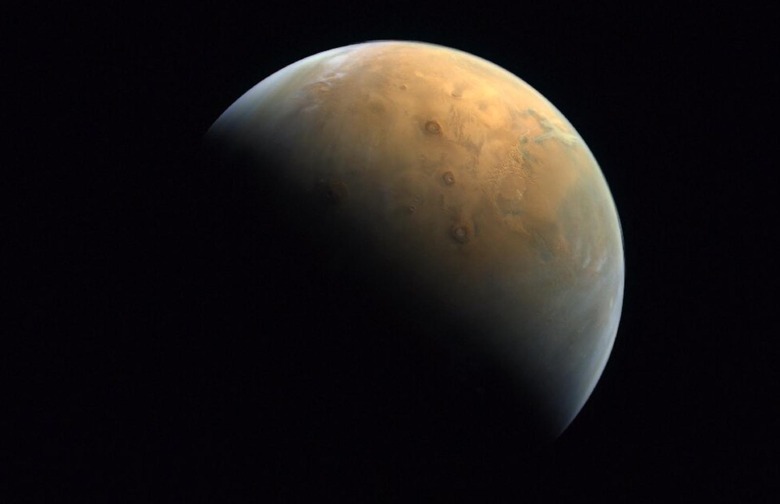New Mars Mission Sends Back First Photo Of The Red Planet
- The second Mars mission arriving at Mars this month is the 'Hope' mission launched by the United Arab Emirates.
- The mission has already reached its destination, and the spacecraft just sent back its very first image of Mars from its approach.
- The mission inserted an orbiter around Mars that will observe and measure various aspects of the planet's atmosphere.
You've probably heard a lot about the NASA Perseverance rover mission that is slated to arrive on Mars in a matter of days. You've probably also seen plenty of headlines about China's Mars rover mission which is also arriving at the Red Planet this month. With those two missions dominating coverage of space news, the first Mars mission from the United Arab Emirates has fallen through the cracks to a small degree. Well, the bright minds working on the groundbreaking adventure are here to remind everyone that they're doing great things too, and they just published their first photo of Mars to prove it.
The UAE's "Hope" spacecraft just fired back its very first image of Mars, and it's a beauty. The probe has already entered orbit around the Red Planet, having completed that important milestone a few days ago, but its camera was already firing as it approached, and the UAE just made the first of those images public.
The Hope mission doesn't include a rover like the Mars explorations planned by NASA and China, but it's nonetheless an exciting piece of technology that will hopefully improve our understanding of how Mars works. The Hope probe is massive and has been described as being roughly the size of an SUV. All that hardware will be focused on observing the planet and studying its atmosphere, which could reveal not just the current state of Mars' habitability (or lack thereof) but also what the planet may have been like in the distant past.
It's almost universally agreed upon by scientists that Mars was once habitable and perhaps even a lot like Earth. We know that there was a lot more water on Mars than exists there today, and the planet likely had flowing rivers, lakes, and even ocean-sized bodies of water on its surface. Unfortunately, we don't yet know enough to say whether or not the planet ever hosted life and, if so, what kind of life it was.
The planet's atmosphere today is a shadow of its former self, and Hope will observe it in a variety of visible and UV wavelengths in order to expose some of its secrets. Understanding the changes in the atmosphere over the course of a Martian year is important, especially if we ever want to visit the planet in person. We'll be awaiting any and all news from the UAE mission as it begins conducting science, but for now, we can enjoy its lovely portrait of Mars.
